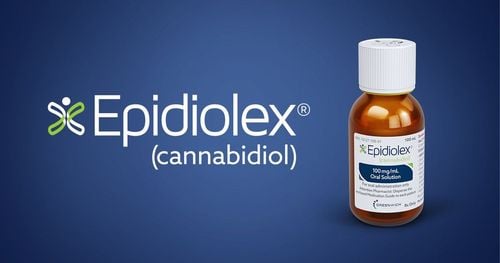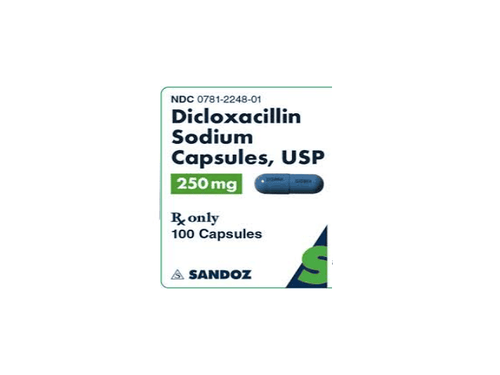This is an automatically translated article.
Febrile convulsions are febrile seizures, 2-5% of children with febrile seizures are born into a family with a history of convulsions. Febrile seizures occur with bacterial or viral infections. They sometimes appear after vaccinations with certain types, such as measles, mumps, and rubella.
1. What is a febrile seizure?
Febrile seizures are febrile convulsions common in children between the ages of 6 months and 5 years. These seizure patterns tend to occur within the first 24 hours of the onset of the fever and when the fever is higher than 39 degrees Celsius or 102.2 degrees Fahrenheit. However, febrile seizures can still occur in lower heat levels.
If your child has a febrile convulsion, he or she may have the following signs:
Rolling of the eyes Drooling Nausea, vomiting Convulsions, twitching or muscle tremors Stiff limbs Mild darkening of the skin Loss of consciousness. In most cases, febrile seizures are usually harmless, but that doesn't mean febrile seizures don't have serious consequences. Finally, a child with a febrile convulsion may feel a little drowsy or look well when the seizure is over. A febrile convulsion lasting more than 5 minutes is one of the warning signs, needing to call 911.

Co giật do sốt phổ biến ở trẻ em trong độ tuổi từ 6 tháng đến 5 tuổi
2. How common are febrile seizures?
An estimated 2 - 4 percent of children under the age of 5 will have a febrile seizure at some point. Febrile seizures are most common between the ages of 12 and 18 months.
A child is more likely to have a febrile seizure (or another repeated febrile seizure) if:
A parent gave birth while they were still young. Febrile seizures first appear when a child is less than 1 year old. Body temperature is not too high when the febrile seizure first occurs The seizure occurs near the onset of the fever.
3. What should parents do if my child has a fever?
The first thing parents need to do is stay calm. After that, parents should quickly turn the child to lie on his side so that the child does not choke on saliva and wipe the saliva from the mouth to keep the airway open.
Absolutely do not put anything in the child's mouth. Folklore often suggests that a chopstick or finger should be placed in the mouth of a convulsing child to keep him or her breathing. However, this is not the right thing to do.
Do not restrain your child's convulsions by tying their limbs, as this may cause injury to the child.
Comfort and encourage the child when the seizure has passed. Avoid causing confusion or fear in the child.
Note: Do not try to bring down a child's fever during a seizure by giving them medicine. Parents should try to lower the child's fever by other measures such as soaking in cool water or applying cool compresses to the child, using fever-reducing medicine by inserting the anus.

Bố mẹ có thể sử dụng thuốc hạ sốt theo cách nhét hậu môn để hạ sốt cho trẻ
Monitor the duration of the seizure. If your child has a seizure that lasts more than five minutes, call 911. In addition, parents should also call an ambulance to take the child to the emergency room as soon as possible if:
The child has trouble breathing or has blue skin, blue lips, stiff neck, Child falls into a coma, lethargy, call to ask if In addition, parents can refer to first aid at home when young children have convulsions due to high fever under the guidance of Doctor Nguyen Thanh Hung - Head of Pediatrics - Neonatology Department - Vinmec Nha International General Hospital Trang (Khanh Hoa).
4. When to call the doctor?
Parents should call the doctor as soon as possible after the seizure ends - no matter how brief the seizure is. The doctor will probably want to examine the child to make sure he or she does not have a serious infection or any other problem causing the fever.
The doctor also recommends some fever-reducing measures that parents can give their children at home, including fever-reducing medications such as acetaminophen or ibuprofen, or a warm sponge bath to lower a child's fever.
5. Can parents prevent a child from having a febrile seizure?
Some parents try to prevent febrile seizures by reducing the fever immediately. However, seizures tend to come on suddenly, sometimes without parents even realizing that the child is sick.
If the child has a fever and the child has had a febrile seizure before, it is easy for parents to understand that it will happen again. Parents should talk frankly with their doctor about their concerns and concerns. The doctor will be able to tell parents when it is wise to try to bring down the child's fever.
If your child has frequent febrile seizures, the doctor may recommend a medicine for the child to take whenever the child has a fever to reduce the risk of having a febrile seizure. However, such drugs have side effects, and in most cases, since febrile seizures are generally harmless, it is not necessary to take precautions.

Cơn co giật do sốt nhìn chung là vô hại nên không cần thiết phải thực hiện phòng ngừa
6. Are febrile seizures a warning sign of something serious?
Usually, a high fever that causes convulsions is the result of a viral upper respiratory infection (such as the flu), stomach flu, scarlet fever, or an ear infection. But in rare cases, a fever is a symptom of meningitis or another serious problem. Your child's doctor will review your child's symptoms and do further screening if necessary.
Prolonged seizures, often 10 minutes or more, can also have long-term effects on a child's brain. That's why parents need to call 911 if their child's seizure has been going on for five minutes.
Even if your child has never had a febrile seizure, fevers can still be scary. Therefore, parents need to add more knowledge and useful information related to the problem of recognizing high fever in young children and how to properly handle it to protect health, as well as prevent other dangerous complications. for children.
Recurrent high fever convulsions can seriously affect health and cause many dangerous complications for children. Therefore, parents need to know how to reduce fever, give first aid when a child has a convulsion as well as care for a child after a seizure to help their child recover soon and prevent any possible risks.
Pediatrics department at Vinmec International General Hospital system is the address for receiving and examining diseases that infants and young children are susceptible to: viral fever, bacterial fever, otitis media, pneumonia in children, .... With modern equipment, sterile space, minimizing the impact as well as the risk of disease spread. Along with that is the dedication from experienced doctors who specialize in pediatric patients, making the examination no longer a concern for parents.
Please dial HOTLINE for more information or register for an appointment HERE. Download MyVinmec app to make appointments faster and to manage your bookings easily.
Reference source: babycenter.com













